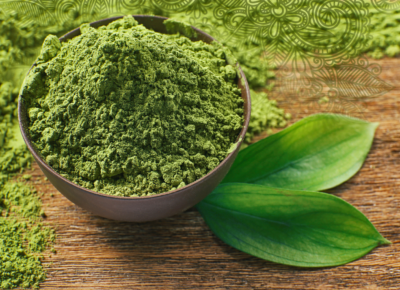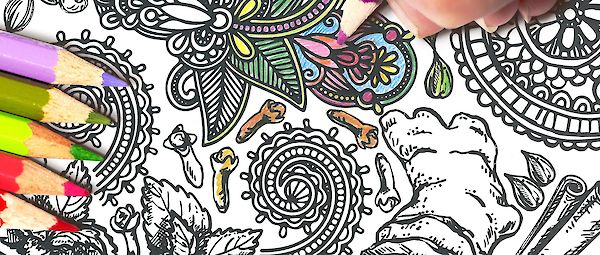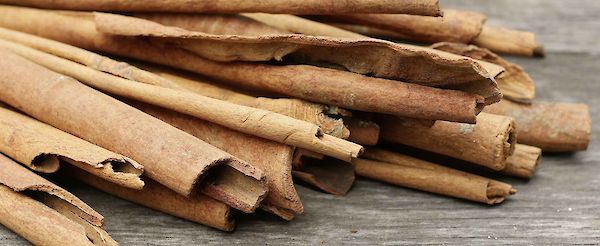Moon Salutation – Find regeneration and inner balance in your life
Does this feature on your list of New Year’s resolutions: “More calm and serenity in my life”?
Some days, we are bursting with energy and full of beans, whereas on other days we just feel weak and exhausted. On days like these we might try to balance our bodies with fresh air, sport or yoga. But did you know that the moon’s energy can also have an influence on our mental and physical health?
The moon – a powerful celestial body
The moon has a highly energising power. It not only influences gravity and therefore the tides, it is also said that the moon can influence our own wellbeing. You might already have noticed that you don’t sleep so well when there’s a full moon.
In some forms of yoga, it is said that (as well as chakras) there are also precisely localised energy centres in the body that react to the moon’s energy: these are known as moon centres, which are activated during the various phases of the moon. Women have eleven of these moon centres. One of them, for example, is in the eyebrows. When the moon’s energy is in this particular moon centre, we often find ourselves in a phase when we are full of ideas, feel creative and make plans.
The moon’s energy changes every 2.5 days and runs through a 28-day cycle. Just as the moon’s energy changes and follows a cycle from one new moon to the next, our feelings and the way we see the world can also change depending on the phase of the moon. Men have only one moon centre, which is at the chin, which means they have far fewer moon centres than women. The moon, also known as la Luna, is a symbol of female strength and is the opposite pole to the male energy of the sun.
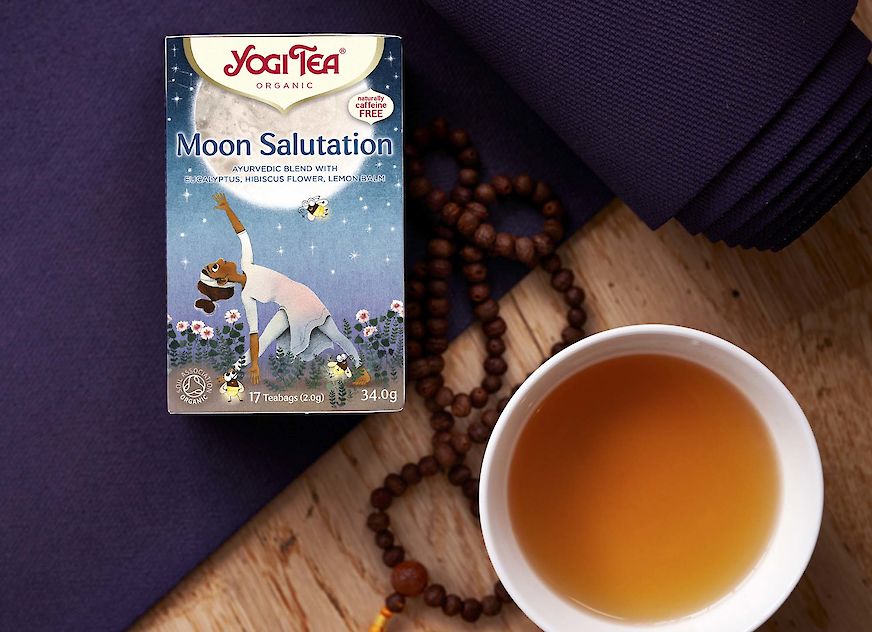
The Moon Salutation in yoga – a homage to the cycle of the moon
The Moon Salutation originated in Hatha yoga. It is made up of 17 tranquil yoga asanas, which together form a flow of movements practised as a sequence in harmony with our breathing, which have an energising effect on the body. Circular movements with the arms imitate the different phases of the moon’s cycle: starting with the new moon, it goes through the moon’s growing phases until the full moon can be admired in all its beauty. The full moon then gradually wanes until a new cycle begins.
Just as the moon represents an opposing and cooling balance to the sun, the “Chandra Namaskar” Moon Salutation is a counterpart to the Sun Salutation. Chandra Namaska simply means “greeting the moon”.
While the Sun Salutation involves greeting the warm, stimulating and outwardly directed energy (yang) of the sun and the start of a bright and beautiful day, the Moon Salutation welcomes the calming, inwardly directed and energising power (yin) of the moon. Its cooling effect makes the Moon Salutation particularly suitable for practising in the summer months.
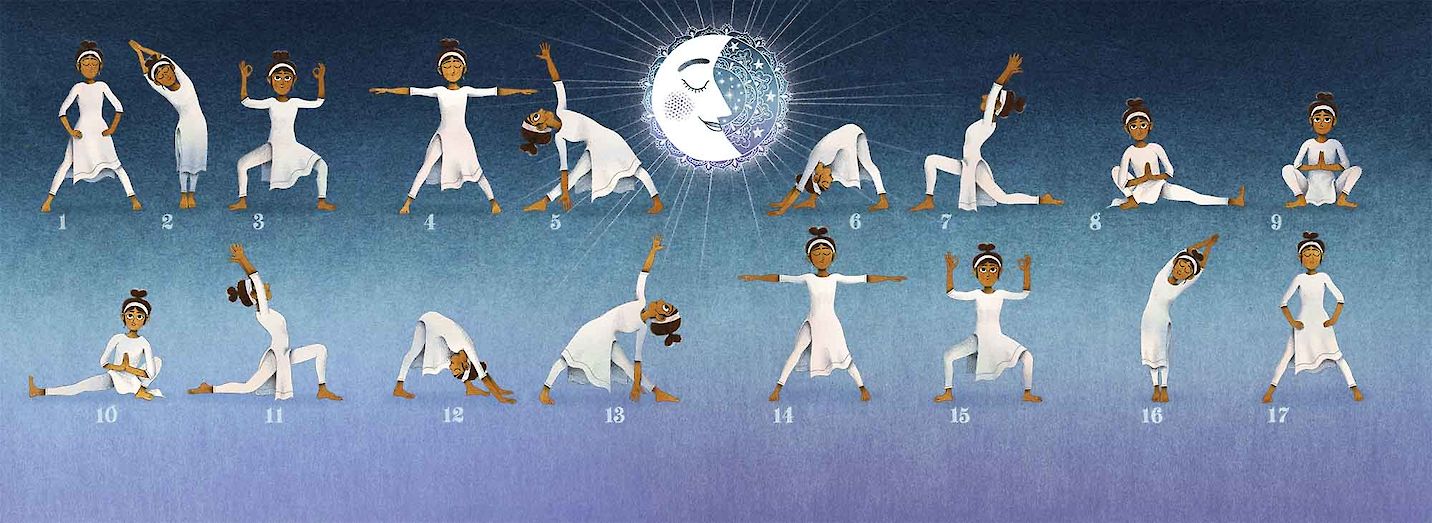
How to practice the Moon Salutation
The moon salutation is divided into 17 individual poses, which together form a relaxing, regenerative flow:
- 1. Start by standing up straight, with your feet shoulder width apart. Place your hands on your hips.
- 2. As you breathe in, reach your arms above your head and stretch over to the right side as you breathe out.
- 3. Descend into the goddess pose by standing with your feet wide apart and bending your knees. Bend your arms into a right angle so that your hands are above your ears and press your thumbs and index fingers together. Breathe.
- 4. As you inhale, straighten your legs and stretch your arms out to the right and left.
- 5. Turn your feet 45° to the right and, as you exhale, let your upper body descend to the right side, with your arms stretched out so that they are perpendicular to the floor. Turn your gaze up towards the sky.
- 6. As you exhale, allow your left arm to go down to the floor and bend down over your stretched out right leg.
- 7. Drop into a lunge by bending your right leg and resting your left knee and left foot on the floor. Raise your arms over your head and lean back slightly. Take a deep breath in and out.
- 8. Bend your right leg into a squat position and stretch your left leg out. Bring the palms of your hands together in front of your chest.
- 9. Bend your left leg to come into a yogi squat.
- 10 -17. Now carry out the same sequence in reverse for the other side of your body. End the Moon Salutation in the same way as you started, by standing up straight with your legs wide apart and your hands on your hips.
The Moon Salutation is suitable for all levels, from beginners to expert yogis. Different styles of yoga may interpret and practise the Moon Salutation in various ways.
YOGI TEA® Moon Salutation – the ideal companion for relaxation
What could be better than rounding off your yoga practice with a delicious cup of tea after your Moon Salutation? YOGI TEA® Moon Salutation is a blend of eucalyptus and minty notes to open up the soul, while turmeric is said to have a grounding effect. White hibiscus and lemon balm regenerate the body and mind and release new energy. This special Ayurvedic recipe with a mix of calming and energising ingredients can help you to find inner balance.
Our Moon Salutation tea is ideal for those times when you feel the need for recovery and regeneration or in the early evening for a relaxed end to the day.
So you can already tick one of your New Year’s resolutions off your list with a relaxed Moon Salutation and a cup of YOGI TEA® Moon Salutation – for a serene start to the new year!

